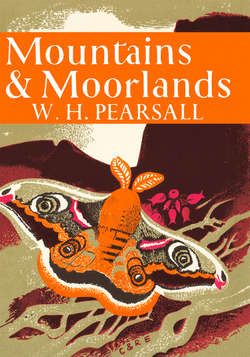Читать книгу Mountains and Moorlands - W. Pearsall H. - Страница 20
AEROBIC AND ANAEROBIC—OXIDISING AND REDUCING SOILS
ОглавлениеThe principal result of a soil becoming saturated with water is that the amount of oxygen in the soil is reduced to vanishing point. Consequently as most of the soil organisms are aerobic, requiring oxygen, the soil population is reduced to the minimum, and there can remain active only a few anaerobic organisms with specialised methods of maintaining their existence without oxygen. The products of the decompositions going on in the soil also change in character. Instead of the formation of carbon dioxide, nitrates, sulphates and phosphates, all containing oxygen, there may be produced instead marsh-gas (or methane, CH4), ammonia (NH3), sulphuretted hydrogen (H2S) or other sulphides, and sometimes phosphine (PH3), a series of compounds devoid of oxygen. All of these products are associated with the activities of anaerobic types of moulds or bacteria, the latter usually being most abundant. The microflora of waterlogged soils is thus specialised in character as well as poor in numbers, while the products of anaerobic composition include substances, in addition to those mentioned above, which may be toxic to the larger rooted plants. Some of the products are also responsible for other manifestations peculiar to boggy soils, such as the “will o’ the wisp” and “corpse-light,” these being attributed to the burning of the highly inflammable marsh and phosphine gases.
In effect, in contrasting waterlogged and aerated soils in this way, we are contrasting two sorts of micro-biological activity—oxidising and reducing—depending on whether the organisms can form chemically oxidised products like carbon dioxide and nitrates or chemically reduced substances like marsh-gas and ammonia.
The particular value of being able to recognise these possibilities is because they give us information as to the effect of the soil conditions on the action of living organisms, and we may infer that the conditions which affect the soil flora will also affect its fauna (see here) as well as the larger plants. Moreover, the level of oxygen content which produces these biological effects is low and it is not one which can be detected in the field with any certainty, if at all, by measurements of soil oxygen. For our present purpose, therefore, it is useful to think of upland soils as belonging to the two types named above.
| oxidising soils contain | reducing soils contain |
|---|---|
| nitrate | ammonia |
| carbon dioxide | marsh-gas (methane) |
| sulphate | sulphides |
| phosphate | phosphine |
| ferric-iron | ferrous-iron |
It is useful also to realise that a large proportion of wet soils may be oxidising in drier periods and reducing in wet.
